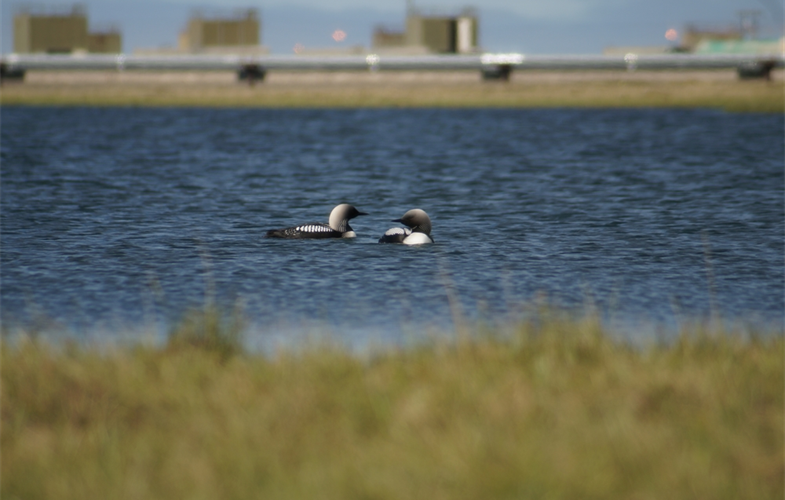A recent WCS-led study that investigated 17 years of migratory bird nesting data in Prudhoe Bay, Alaska, discovered that nest survival fell considerably near high-use oil and gas infrastructure, as well as the noise, dust, traffic, air pollution, and other disturbances associated with it.

Image Credit: Kayla Scheimreif/WCS
Prudhoe Bay is a hub of energy development on the Arctic Coastal Plain, one of the world’s most important avian nesting areas. Millions of birds nest here, with some moving across the country to wintering areas in Central and South America and even Africa. In contrast others traverse the Pacific Ocean to Russia, Japan, China, New Zealand, Australia, and Antarctica.
The observations, published in the journal Avian Biology, come as the United States recently approved the $8 billion Willow oil project, a contentious, long-term effort to drill in the 36,875 square mile National Petroleum Reserve (NPR-A) west of Prudhoe Bay, Alaska’s largest remaining untouched wilderness in the United States.
Willow’s proposed infrastructure borders the Teshekpuk Lake Special Area, one of five places within the NPR-A designated for production due to considerable ecological importance or subsistence value—in this case, nesting waterfowl and shorebirds, as well as caribou.
Tundra-breeding birds contend with short breeding seasons, harsh climatic conditions, and now, rapidly changing, variable, and unpredictable environmental conditions caused by climate change. Additionally, as we demonstrate here, those breeding in industrial areas are impacted by human activities too.
Martin Robards, Study Author and Regional Director, Arctic Beringia Program, Wildlife Conservation Society
Robards continued, "The urgency to better understand these relationships and mitigate impacts cannot be expressed strongly enough, given widely acknowledged declines in these species, our national and global obligations to protect migratory birds, and that the potential impacts that are large."
Between 2003 and 2019, the research team assessed factors impacting the reproductive characteristics of breeding birds at Prudhoe Bay. They looked at 1265 shorebird nests, 378 songbird nests, and 231 waterfowl nests.
The team discovered that nest survival reduced dramatically closer to high-use infrastructure, which was not previously observed in previous short-term investigations. Long-term records are uncommon in the Arctic, yet they are important for understanding the effects of climate change and rising anthropogenic activity on breeding birds.
Factors related to industrial development that may directly or indirectly affect nesting include habitat degradation due to hydrology modifications and road dust, noise, air pollution, vehicle and aircraft traffic, and increased nest predator populations, such as ravens, glaucous gulls, Arctic foxes, and other species.
In the face of current uncertainty, to protect migratory birds, the U.S. Government should ensure the most important bird areas continue to be set aside, as has been done through the NPR-A’s Special Areas.
John Calvelli, Executive Vice President for Public Affairs, Wildlife Conservation Society
Journal Reference:
McGuire, R. L., et al. (2023). Patterns in avian reproduction in the Prudhoe Bay Oilfield, Alaska, 2003–2019. Journal of Avian Biology. doi.org/10.1111/jav.03075.